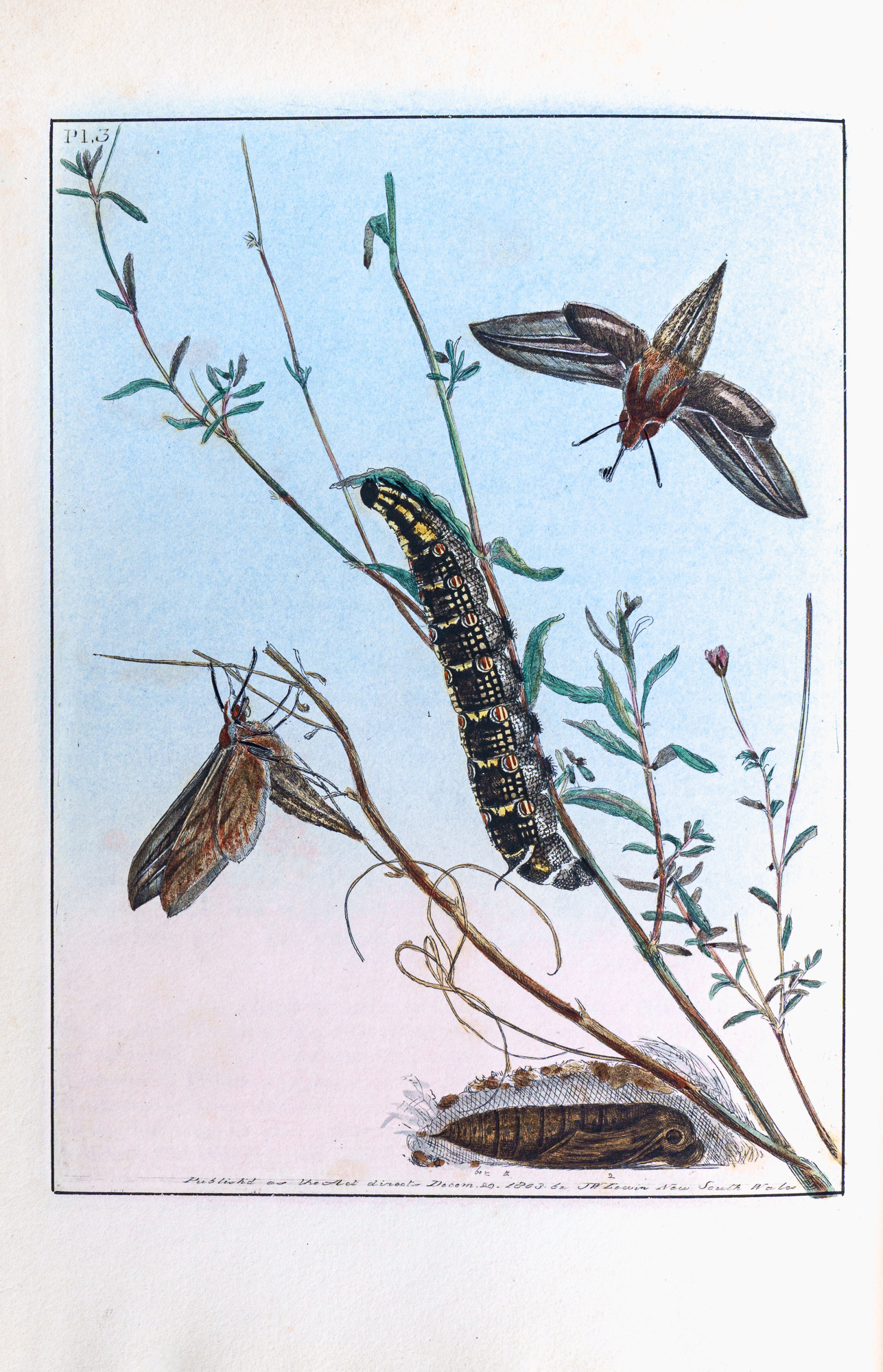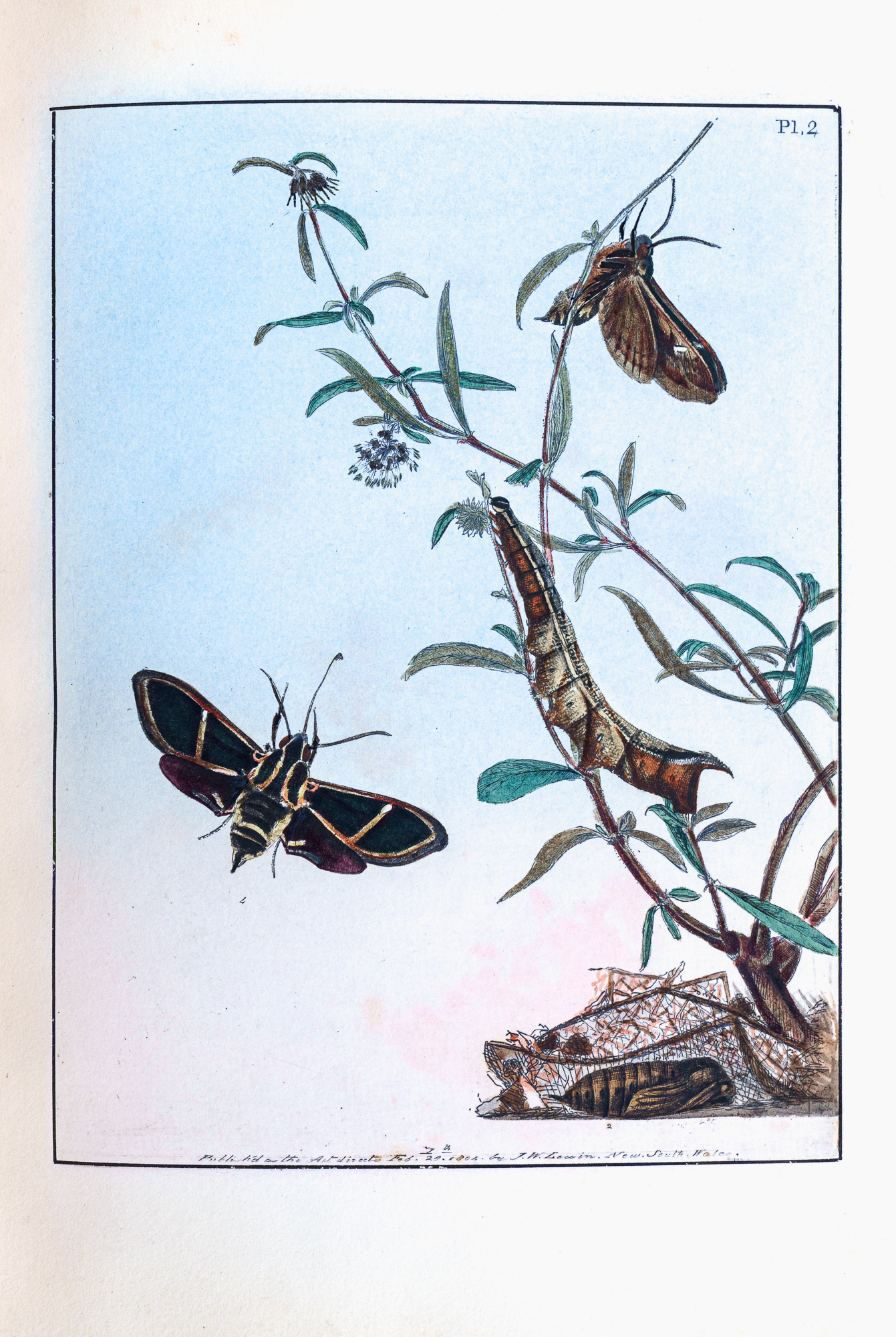
Prodomus Entomology: Natural History of Lepidopterous Insects of New South Wales Collected, Engraved and Faithfully Painted after Nature by John William Lewin A.L.S of Paramatta, New South Wales.
Prodomus Entomology was Lewin's first book and was published in London in 1805. He was able to do this because he had a wealthy patron - the London silver smith, avid collector and entomologist Dru Drury - who was the principal sponsor of Lewin's journey to Australia in 1798. The book includes has 18 hand-coloured lithographic plates with associated letterpress. Lewin's prints are unusual for the times as they show all stages of the development of moths in a natural setting. This includes the larvae (and the leaf on which it was feeding), the crystalis, and the moth itself. Previous illustrators had shown insects set out formally as if in a display cabinet.
Before coming to Australia John William Lewin and his brother Thomas had worked for their father William, who was a member of the Linnaean Society, and had published the Birds of Great Britain (1789-1794) with some of the plates bearing the brothers' initials. John had therefore been trained in the art of etching and the production of high quality coloured pictures of birds.
John Lewin arrived in Sydney on 11th January 1800 on board the Minerva, having missed the Buffalo on which his wife waited in vain for him to board before the ship set sail. He was the first professional artist to settle in Australia.
In the Preface Lewin wrote: - “The contents of this little book -- were collected, painted and engraved by the author; and sent to London by him for publication, to furnish him with the means of returning to England, his native country, after an absence of eight years." And again - “It should be observed also, that the natural history, as well as the engraving, was done on the spot, and not from dry specimens, or notes still more abstruse.”

